
MENUMENU
TALK TO AN EXPERT
Special Hours: 7AM – 6PM PST
TALK TO AN EXPERT
Special Hours: 7AM – 6PM PST
Maintaining proper sulfuric acid levels in lead-acid batteries ensures the battery operates effectively. However, sulfuric acid is hazardous and can cause severe injury or death if handled improperly. Battery acid is a crucial but frequently misunderstood part of a lead-acid battery. Let’s dive into the dangers of battery acid and examine the innovative technology paving the way for safer and greener technology.
Lead acid batteries have a variety of applications. From the car battery providing power under the hood of your car to a deep cycle storage battery powering an RV, they have been ubiquitous for many years. While many types of batteries are on the market, battery acid is typically found in lead acid batteries.
Battery acid consists of a diluted sulfuric acid solution. The concentration of sulfuric acid (H2SO4) in most batteries usually aligns with 30-50% sulfuric acid mixed with 50-70% distilled water. Manufacturers use sulfuric acid because it works particularly well for the chemical reaction that creates electricity with the lead plates in the battery that form the positive and negative electrodes.
The chemical reaction within lead acid batteries looks like Pb + PbO2 +2H2SO4 → 2PbSO4 + 2H2O. As the battery discharges, the lead (Pb) and lead dioxide (PbO2) on the plates react with the sulfuric acid (battery acid), which forms lead sulfate. This releases electrons, which travel from the negative electrode to the load and then back to the positive electrode. Then, during the reverse reaction, the electrical energy from the charger is converted into chemical energy within the battery. This causes the lead sulfate to convert into lead and lead dioxide until the battery is fully charged.
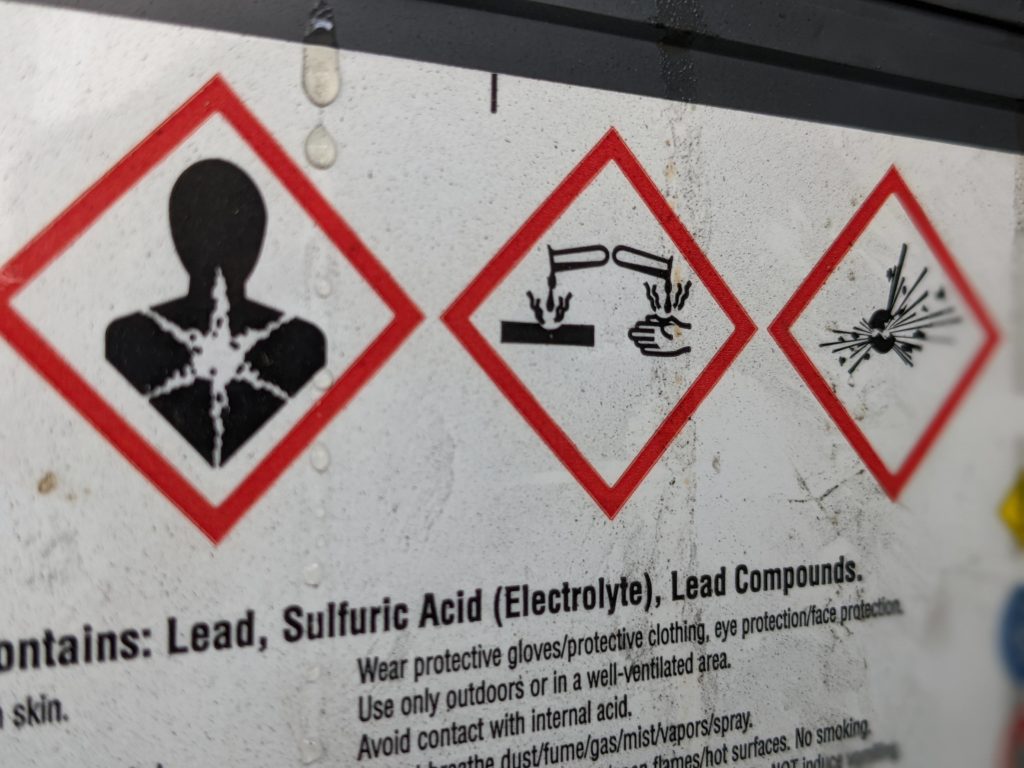
Any time you are around or using lead-acid batteries, you could come into contact with battery acid. It occurs most frequently for those using flooded lead-acid batteries. As the cheapest and oldest automotive, RV, and marine power source, flooded lead-acid batteries are relatively standard. You must periodically open up and top off these batteries with distilled water to ensure the acid remains at the proper level for optimal function.
AGM battery users may also come into contact with acid. While AGM batteries are sealed and don’t require top-offs like flooded lead-acid batteries, they still contain harmful chemicals. If they’re punctured or damaged, this acid can leak out. The same risk, of course, is present for traditional flooded lead-acid batteries, too.
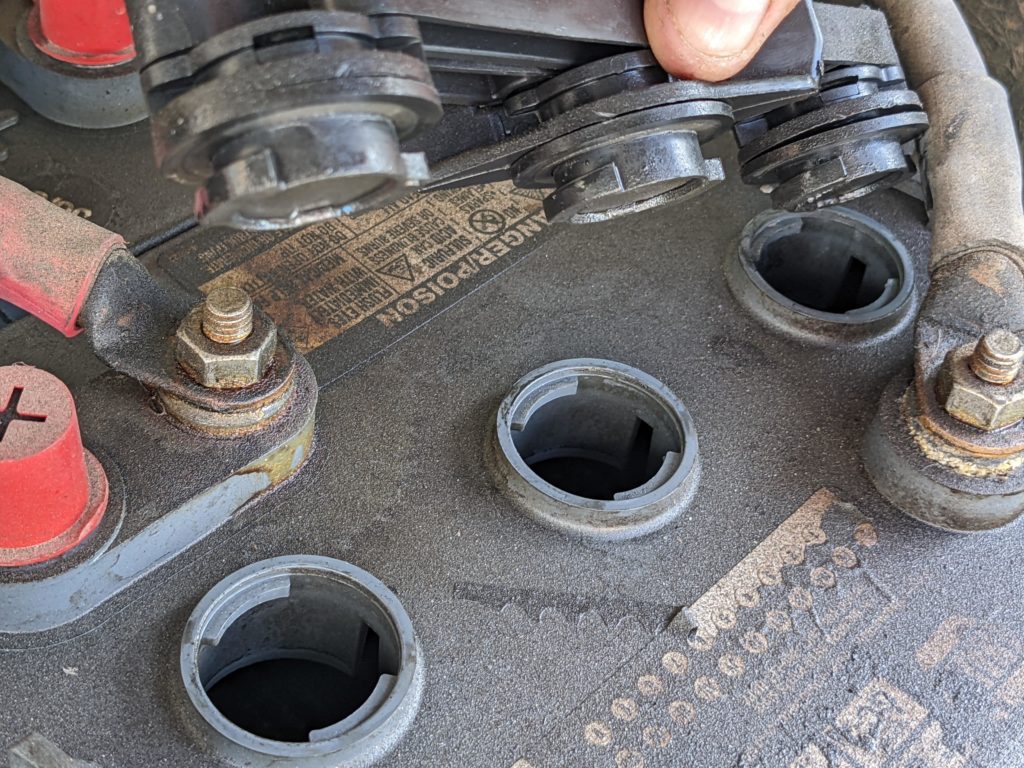
Sulfuric acid is highly corrosive and can severely impact your health and the environment. Here are some of the most significant hazards to be aware of.
Sulfuric acid is exceptionally harmful, even when diluted with distilled water in batteries. Fumes from lead acid batteries contain traces of lead and other harsh chemicals. Extensive exposure can cause significant breathing discomfort. In the long run, frequent and repeated exposure to these chemicals can lead to tooth decay, increased risk of certain types of cancer, and even early cognitive decline.
Spilling battery acid onto your skin or exposing your body to it is another potentially serious hazard. Exposure will result in chemical burns, which can cause significant and permanent skin damage. Even worse, contact with the eyes can lead to severe vision problems and blindness. With skin exposure, it’s crucial to clean and treat the area as quickly as possible as damage will continue to worsen as long as acid is present.

If battery acid is dangerous enough to burn your skin permanently, imagine what it can do to the sensitive systems inside your body. Ingesting battery acid will lead to difficulty breathing, severe pain, burns to the mouth and throat, fever, and other issues. In addition, damage can continue for days or even weeks after ingesting acid, potentially leading to infections or the need to remove damaged parts of the stomach or digestive tract.
Unfortunately, batteries are often thrown in landfills, sending many harmful chemicals into the environment. The dangers of battery acid go far beyond its impact on humans. It is also hazardous to the environment.
Animals that come into contact with battery acid will generally face symptoms similar to humans. It can damage their lungs, digestive tracts, and skin. When these harmful chemicals leech into the soil, they can also affect plant growth.

So, what are the best ways to ensure you don’t end up in the emergency room while dealing with battery acid? Here are a few safety tips that can prevent these situations.
An easy way to prevent skin damage from spilled or splashed battery acid is to keep your skin covered. At a minimum, wear long sleeves, long pants, and closed-toe shoes when working with lead-acid batteries. You can also take advantage of special clothing items designed to prevent skin damage from chemicals. Finally, don’t forget safety glasses and gloves to protect your eyes and hands.

Keeping fumes at bay can be as simple as working outdoors or in an area with good ventilation. Most lead acid batteries in RVs, boats, and cars put out minimal fumes. Typically, these fumes only become a hazard in poorly ventilated spaces. Good air circulation will ensure you can breathe fresh air.
In most cases, you’ll have minimal opportunity to come into contact with battery acid. Using your batteries as designed is the best way to ensure your safety. Lead acid batteries should only power systems and electronics within the parameters set by the manufacturer.
Additionally, it’s crucial to follow proper installation procedures. Never install lead-acid batteries in living spaces or areas without adequate ventilation. The vapors they produce are harmful, even if you cannot smell them. These batteries are also more volatile than other alternatives, making them potentially explosive. Keeping them outside of your living space will further ensure your safety.
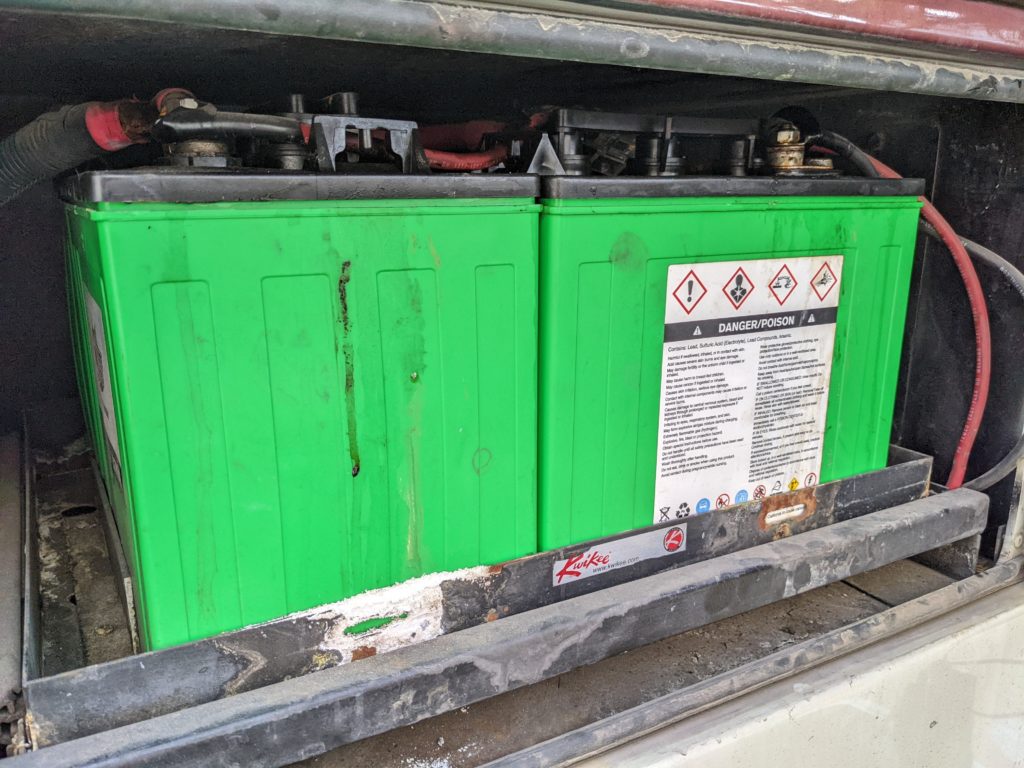
Batteries aren’t toys. For the many reasons listed above, they can be dangerous in the hands of children who may not understand the hazards they present. Keeping batteries away from kids is paramount to avoiding severe or potentially deadly accidents.
Your obligation to keep battery acid from doing damage doesn’t end when you’re through using the battery. Disposing used batteries properly is crucial to keeping dangerous contaminants from entering the environment. Leave this to the professionals.
Many auto parts retailers and battery stores will recycle your old battery for you, often for free. Your town, county, or state may also have designated sites or events for accepting hazardous materials like old batteries. In any case, never throw lead-acid batteries away in standard trash or recycling bins.
Modern battery technology has leveraged scientific advances to create acid-free batteries. Lithium-ion batteries are fully sealed and don’t contain traditional battery acid. This allows them to be maintenance-free while limiting potential hazards, making them far safer than their counterparts.
At Battle Born, we build lithium iron phosphate (LiFePO4) batteries that are lighter, have a 100% depth of discharge, and last much longer than dangerous lead-acid batteries. Additionally, our batteries do not produce harmful vapors and can be installed in living spaces in any orientation.
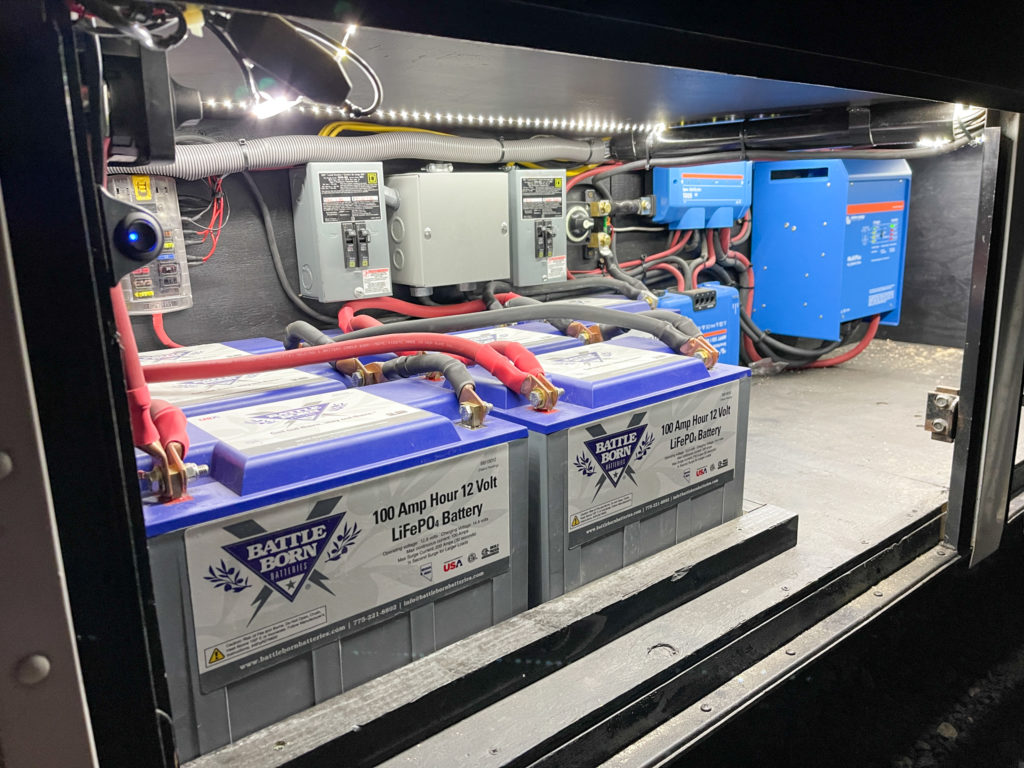
Lead acid batteries used in cars, RVs, boats, and other applications can be safe when used correctly. However, they still present many potential hazards. Avoid the dangers of battery acid by upgrading to safer and more reliable lithium batteries.
As an early mover in the transition from traditional lead acid batteries to lithium, Battle Born Batteries has made life on the road, on the water, and off the grid better with lighter, safer, and more powerful energy storage options. Experience the freedom and make the switch to reliable power!
We know that building or upgrading an electrical system can be overwhelming, so we’re here to help. Our Reno, Nevada-based sales and customer service team is standing by at (855) 292-2831 to take your questions!
Also, join us on Facebook, Instagram, and YouTube to learn more about how lithium battery systems can power your lifestyle, see how others have built their systems, and gain the confidence to get out there and stay out there.
Shop Best Sellers

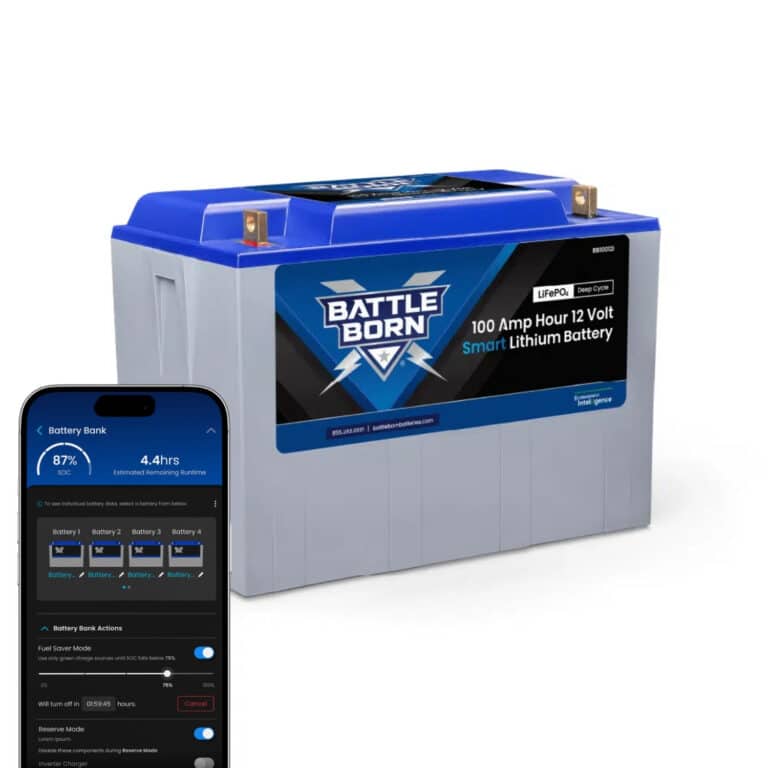

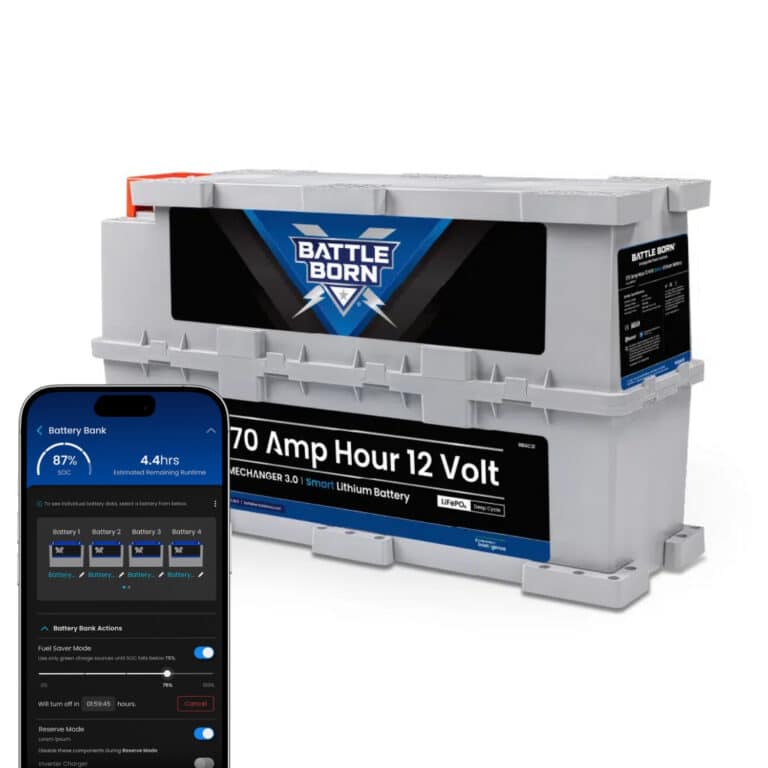




Ask a technical specialist now at 855.292.2831
Stay in the Know